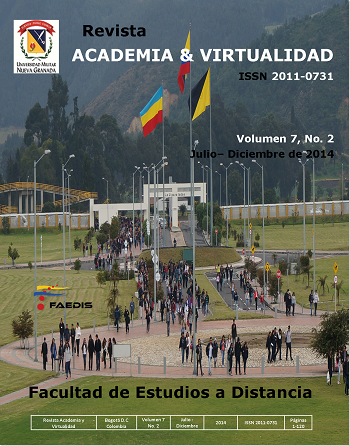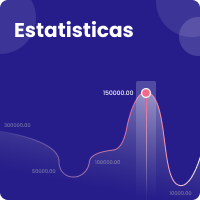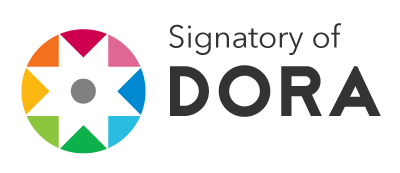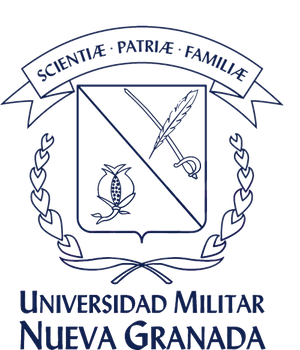APRENDER FAZENDO - PESQUISAR REFLEXIONANDO: CASO DE ESTUDO PARALELO NA COLÔMBIA E O CHILE.
Resumo
O presente artigo oferece uma reflexão ao redor das posturas metodológicas do construcionismo que integram as tecnologias da informação e comunicação (tic), como a WebQuest, objetos digitais de aprendizado, plataformas e-Learning, entre outras, de grande preeminência atual, frente aos novos objetivos e desafios com visão futurista da sociedade. Com fim de começar a reflexão sobre o processo de ensino-aprendizado se propõe um caso de estudo que permita avaliar o como o metabolismo da sala de aula tem mudado, principalmente pelo uso massivo das tic que permite ao estudante aplicar uma metodologia da informação distribuída em diferentes e variadas fontes de informação, afastando a metodologia centralizada, que o prepara por meio do aprender fazendo e pesquisar reflexionando. No ambiente universitário, a pesquisa faz parte da atividade do estudante convertido inicialmente em auxiliar de pesquisa que é onde se precisa uma análise dos efeitos causados pelas suas pesquisas no meio sociocultural e produtivo no qual atua. O caso de estudo desenvolve-se com os grupos de pesquisa em telemedicina da Universidade Militar Nova Granada de Colômbia (Tigum) e em Novas Tecnologias da Universidade de Santiago de Chile (gint), que durante 2012 e 2013 têm realizado um estudo paralelo de exploração aplicando a metodologia “aprender fazendopesquisar reflexionando”, a qual permite avaliar os resultados de pesquisa e o desenvolvimento professional dos seus auxiliares participantes. Deste jeito, se tem obtido que o 80% dos assistentes continuem seus estudos de pós-graduação em mestrias o doutorados a nível nacional ou internacional.
Downloads
Referências
Argyris, C. & Schön, D. (1996). Organizational learning II: Theory, method and practice, Reading, Mass: Addison Wesley.
Berlin, D.F. (1996). “Action research in the science classroom: Curriculum improvement and teacher professional development”. In: J. Rhoton y P. Bowers (Eds.), Issues in science education (pp. 73-80).
Bunge, M. (2007). A la caza de la realidad. La controversia sobre el realismo. Barcelona: Editorial Gedisa. Versión castellana de Mario Bunge: Chasing Reality: Strife over Realism. Toronto, University of Toronto Press, 2006
Chi, M.T.H., et al. (1989). “Self-explanations: How students study and use examples in learning to solve problems”. In: Cognitive Science, 13, 145- 182.
Dale, E. (1932). “Methods for Analyzing the Content of Motion Pictures”. In: Journal of Educational Sociology, 6: 244-250.
Dewey, J. (1952) La búsqueda de la certeza: un estudio de la relación entre el conocimiento y la acción. Trad. Eugenio Imaz, México, Fondo de Cultura Económica.
Eisner, E.W. (1998). The Enlightened Eye. Qualitative inquiry and the enhancement of educational practice, Upper Saddle River, NJ: Prentice Hall.
Elliott, J. (1986). “Action-Research: normas para la autoevaluación en los colegios”. En: L. Haynes (Ed.), Investigación-acción en el aula (pp. 21-48).
Feldman, A. (1996). “Enhancing the practice of physics teachers. Mechanisms for the generation and sharing of knowledge and understanding in collaborative action research”. In: Journal of Research of Science Teaching, 33, 513-540.
Fulmer, R.M. (1994). A model for changing the way organizations learn. Planning Review a publication of the Planning Forum, May-June 1994:20.-
Guenter, L.H. (2012). “Co-evaluación de experiencias basadas”. En: Aprender haciendo y realimentación desde aprender haciendo hasta el aprendizaje activo. Universidad Earth, Costa Rica.
Harrison, R. (1969). “Communication Theory”. In: R. V. Wiman & W. C. Meierhenry (Eds.) Educational Media: Theory into Practice. Columbus, OH: Merrill.
Jay, J.K., & Johnson, K.L. (2002). “Capturing complexity: A typology of reflective practice for teacher education”. In: Teaching and Teacher Education, 18, 73-86.
Jonassen, D.H., Mayes, T., & McAleese, R. (1993). “A manifest for constructivist approaches to uses of technology in higher education”. In: T.M. Duffy, J. Lowyck & D.H. Jonassen (eds.) Designing environments for constructive learning (pp. 231- 247). Berlin: Springer.
Kanfer, F.H. (1977). “Selbstmanagement-Methoden” [Métodos de ser gerente de sí-mismo]. En: F. H. Kanfer & A. P. Goldstein (Comps.), Möglichkeiten der Verhaltensänderung. Munchen: Urban & Schwarzenberg.
Kulik, J.A. & Kulik, C-L.C. (1988). “Timing of feedback and verbal learning”. In: Review of Educational Research, 58, 79-97.
Lave, J. & Wenger, E. (1991). Situated learning. Legitimate peripheral participation. Cambridge: Cambridge University Press.
Mayer, R.E. (2000). “What is the place of science in educational research?” In: Educational Researcher, Vol. 29, No. 6, pp. 38-39.
Miller, J.L. (1992). “Exploring power and authority issues in a collaborative research project”. In: Theory Into Practice, 31, 165-172.
Moerbeke, G. (1982) Metafísica. Trad. de Valentín García Yebra, Metafísica de Aristóteles, Edición trilingüe, Madrid, Gredos, 1982.
Newman, S. (1999) Philosophy and Teacher Education: A Reinterpretation of Donald A. Schon’s Epistemology of Reflective Practice, London: Avebury.
Nyden, P. & W. Wiewel (1992). “Collaborative research: Harnessing the tensions between researcher and practitioner”. In: The American Sociologist, 23, 43-55.
Pakman, M. (2000). ”Thematic Foreword: Reflective Practices: The Legacy Of Donald Schön”. In: Cybernetics & Human Knowing, Vol.7, No. 2-3, pp. 5-8. http://www.imprint.co.uk/C&HK/vol7/
Pakman_foreword.PDF Parke, H.M. & C.R. Coble (1997). “Teachers designing curriculum as professional development: A model for transformational science teaching”. In: Journal of Research in Science Teaching, 34, 773-790
Putnam, H & Ruth A. (1992). “William James’s Ideas”, Realism with and Human Face, Cambridge, Mass., Harvard University Press.
Rogoff, B. (1995). “Observing sociocultural activity on three planes: participatory appropriation, guided participation, and apprenticeship”. In: J.V. Wertsch, P. del Rio & A. Álvarez (Eds.), Sociocultural Studies of Mind (pp. 139-164).Cambridge: Cambridge University Press.
Schön, D. (1991). The Reflective Turn: Case studies in and on educational practice. New York: Teachers College (Columbia).
__________. (1987). Educating the Reflective Practitioner, San Francisco: Jossey-Bass. 355 + xvii pages.
Shuell, T.J. (1986). “Cognitive conceptions of learning”. In: Review of Educational Research, 56, 411-436.
Stern, D. & Huber, G.L. (Eds.) (1997). Active learning for students and teachers. Reports from eight countries. Frankfurt A.M.: Peter Lang Verlag & OECD.
Stewart, D.K. (1969). “A learning-systems concept as applied to courses in education and training”. In: R. V. Wiman and W. C. Meierhenry (Eds.) Educational media: Theory into practice. Columbus, OH: Merrill.
Suárez, M. (1998). “Desarrollo de un grupo de investigación-acción colaboradora en proyectos curriculares innovadores”. En: Revista de Educación, 316, 369-382.
Treichler, D.G. (1967). Are you missing the boat in training aids? Film and Audio-Visual Communication, 1, 14-16, 28-30, 48.
Vygotsky, L.S. (2002). Denken und Sprechen. Psychologische Untersuchungen [Pensar y hablar. Indagaciones psicológicas]. Weinheim: Beltz.
Wals, A.E.J. y A.H. Alblas (1997). “School-based research and development of environmental education: a case study”. In: Environmental Education Research, 3, 253-267.
Wiman, R.V. & Meierhenry, W.C. (Eds.). (1969). Educational media: Theory into practice. Columbus, OH: Merrill.
Wompner F y Montt F. (2007). “Aprender a aprender. Un método valioso para la educación superior”. Observatorio de la Economía Latinoamericana 72. Texto completo en www.eumed.net/cursecon/ ecolat/cl/
Zuber-Skerritt, O. (1996). “Introduction: New directions in action research”. En: O. Zuber-Skerritt (Ed.), New Directions in Action Research (pp. 3-9). Washington, DC: Falmer Press.











